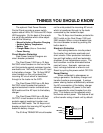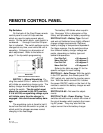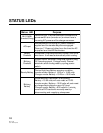
90-0115-00
10/97 Fltman.pm65
BATTERIES
BATTERY TYPES
Use only deep-cycle batteries with your
Fleet Power Inverter/Charger. These fall
into two broad categories, wet cell and gel
cell.
Wet Cell Batteries
True deep-cycle wet cell batteries are
characterized by relatively thick plates that
are alloyed with antimony.
Common marine/RV deep-cycle
batteries are acceptable. However, golf
cart batteries have better performance and
life. They are 6 Volt batteries that must be
used in series pairs. High quality marine
deep-cycle batteries offer good perfor-
mance and are available in a wide variety
of sizes. Floor sweeper, fork lift or large 2
Volt cells can also offer excellent perfor-
mance, if their large size can be accommo-
dated.
It should be noted that high antimony
deep-cycle batteries will give off gas as a
natural result of charging and will experi-
ence some water loss. It is very important
that the electrolyte level be checked
frequently and topped off with distilled
water when necessary. Never allow the
tops of the plates to be exposed to air, as
contamination of the cell will result. Keep-
ing the tops of batteries clean will reduce
self-discharging. Always provide ventilation
for the battery storage compartment.
Do not use car batteries or engine
starting batteries of any kind with your
inverter/charger. Beware of any battery that
is rated in Cold Cranking Amps (CCA). This
is a rating which applies only to engine
starting batteries. In general, most wet cell
batteries that are described as hybrid bat-
teries, suitable for either engine starting or
deep-cycle applications, are a compromise
and will give limited life if deeply dis-
charged.
Beware of 8-D starting batteries that
are commonly used for starting diesel en-
gines. These batteries are not deep-cycle.
12


















